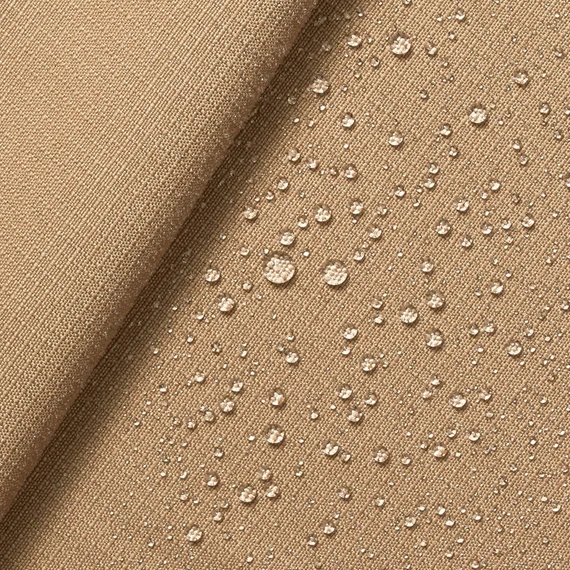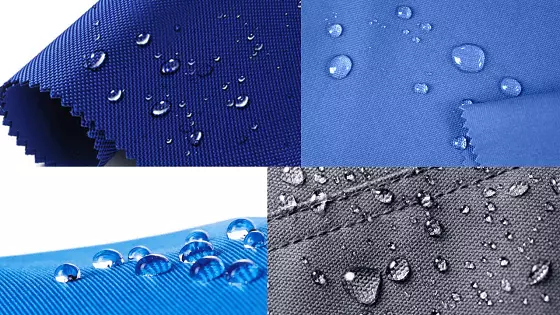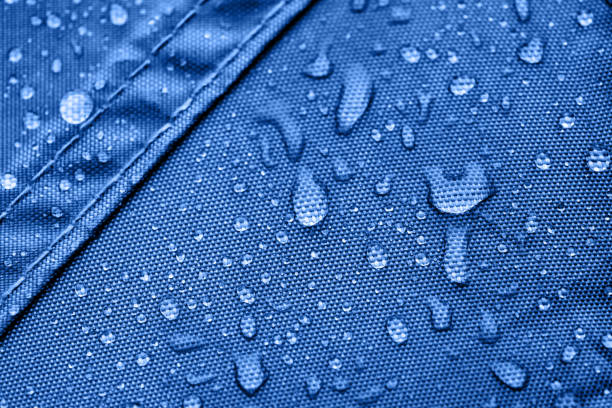The textile industry has seen remarkable advancements over the years, particularly in the area of fabric waterproofing technologies. These innovations have enabled the creation of materials that not only keep water out but also maintain breathability, comfort, and durability. This blog explores the latest advancements in fabric waterproofing technologies and their impact on various industries, from fashion to outdoor gear.
Understanding Fabric Waterproofing
Fabric waterproofing involves the application of treatments or coatings that repel water, preventing it from penetrating the fabric. Traditional methods relied heavily on coatings that could affect the fabric’s feel and breathability. However, modern technologies have revolutionized this process, creating waterproof fabrics that are both functional and comfortable.

Types of Waterproofing Technologies
- Durable Water Repellent (DWR) Coatings
DWR coatings are applied to the surface of the fabric, creating a hydrophobic layer that repels water. These coatings are widely used in outdoor apparel and gear. Modern DWR technologies are moving towards more environmentally friendly solutions, reducing the use of harmful chemicals like perfluorinated compounds (PFCs). - Laminates and Membranes
Laminates and membranes involve bonding a waterproof layer to the fabric. Gore-Tex is a well-known example, using a microporous membrane that allows moisture vapor to escape while keeping water out. Recent advancements include more breathable and lightweight laminates, enhancing comfort without compromising waterproofing. - Nanotechnology
Nanotechnology has introduced revolutionary waterproofing solutions. By manipulating materials at the molecular level, nanotechnology creates fabrics that are not only waterproof but also stain-resistant and highly durable. This technology is used in both high-performance outdoor gear and everyday clothing. - Bio-Based and Eco-Friendly Solutions
The push for sustainability has led to the development of bio-based waterproofing technologies. These solutions use natural and renewable resources, reducing environmental impact. Examples include wax-based coatings and bio-membranes derived from plant materials.
Benefits of Advanced Waterproofing Technologies
- Enhanced Comfort and Breathability
Modern waterproofing technologies prioritize breathability, ensuring that the fabric remains comfortable for prolonged use. This is particularly important in activewear and outdoor gear, where moisture management is crucial. - Increased Durability
Advances in waterproofing have led to more durable treatments that withstand repeated washing and wear. This longevity ensures that waterproof fabrics remain effective throughout their lifecycle. - Eco-Friendliness
The shift towards sustainable waterproofing solutions helps reduce the environmental footprint of textile production. Eco-friendly coatings and membranes are less harmful to the environment and safer for consumers.
For a deeper understanding of how digital technology is transforming textile production, read our blog on The Impact of Digital Technology on Textile Design and Production.

Applications of Waterproof Fabrics
- Outdoor Apparel
Waterproof fabrics are essential in outdoor apparel, providing protection from the elements while maintaining comfort. Innovations in this area have led to lighter, more breathable jackets, pants, and accessories. - Sportswear
Activewear benefits from advanced waterproofing technologies, ensuring athletes stay dry and comfortable during intense activities. Breathable membranes and nanotechnology treatments are commonly used. - Fashion Industry
The fashion industry has embraced waterproofing technologies to create stylish yet functional clothing. From raincoats to everyday wear, waterproof fabrics are increasingly integrated into mainstream fashion. - Home Textiles
Waterproofing is also applied to home textiles, including upholstery, curtains, and outdoor furniture covers. These treatments protect against spills, stains, and weather damage, extending the life of household items.
Staying Ahead in the Textile Industry
Staying ahead in the textile industry requires staying informed about the latest trends and innovations. Advanced waterproofing technologies are just one aspect of the broader technological advancements transforming the industry. To learn more about these trends, visit our blog on Staying Ahead in the Textile Industry: Trends and Insights.
The Future of Waterproofing Technologies
The future of fabric waterproofing lies in continued innovation and sustainability. Researchers are exploring new materials and methods to improve performance and environmental impact. Smart textiles, integrating electronic components with waterproof fabrics, are also on the horizon, promising to revolutionize the industry further.
For more insights into how technology is shaping the textile industry, check out our blog on Technology in Textiles.
Conclusion
Advances in fabric waterproofing technologies have significantly enhanced the functionality, comfort, and sustainability of textiles. These innovations are crucial for various applications, from outdoor gear to everyday fashion. Staying updated with these advancements allows manufacturers to produce high-quality, durable, and eco-friendly products.
For comprehensive solutions in textile manufacturing and sourcing, visit locofast.com. Locofast offers a robust network of suppliers and manufacturers, providing high-quality textiles and reliable services to meet your business needs. Explore their website today to learn more about how Locofast can support your journey toward excellence in the textile industry.
